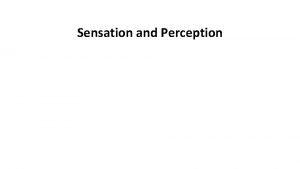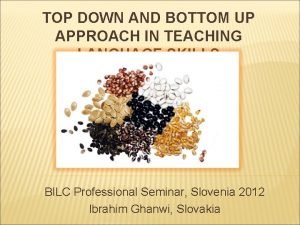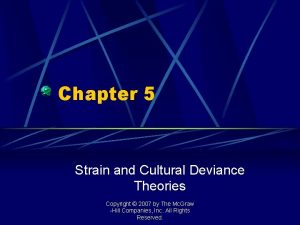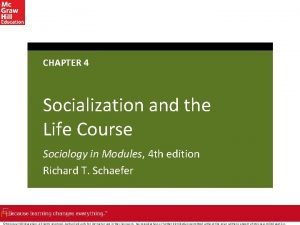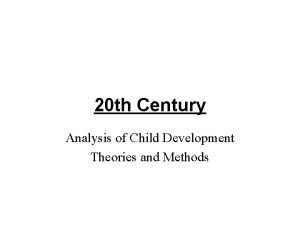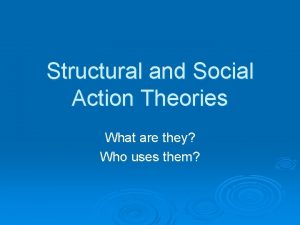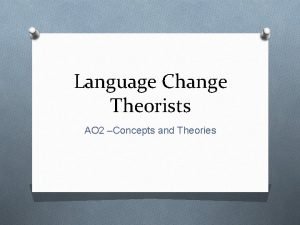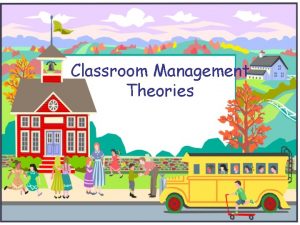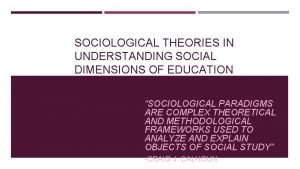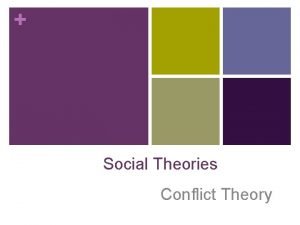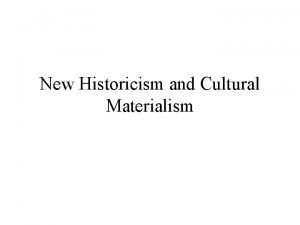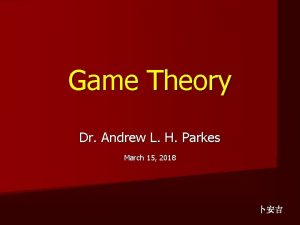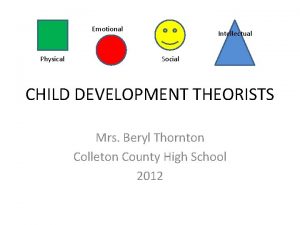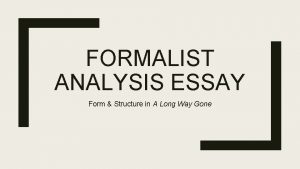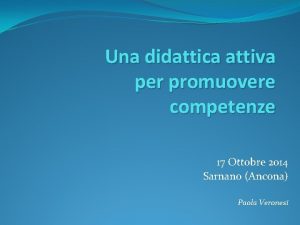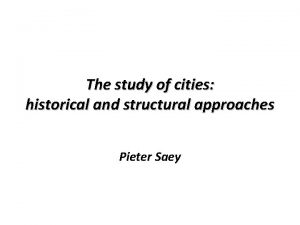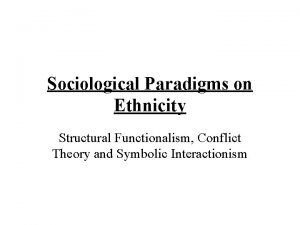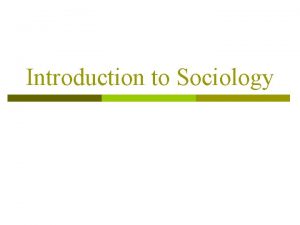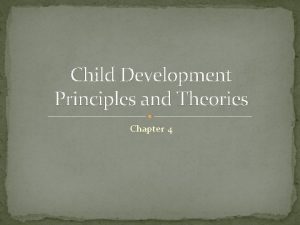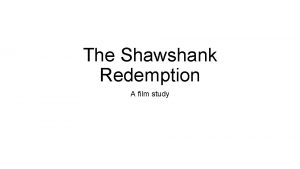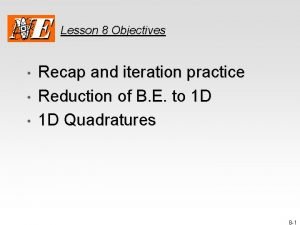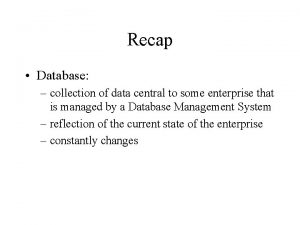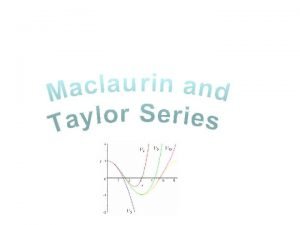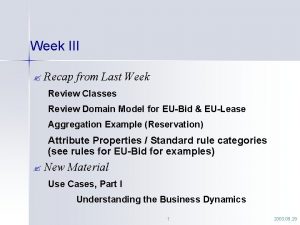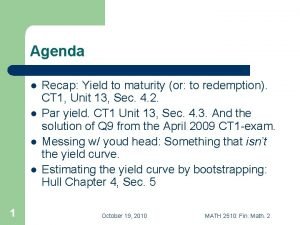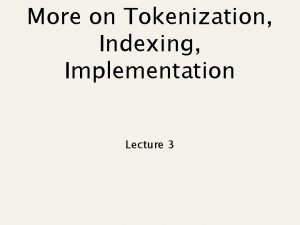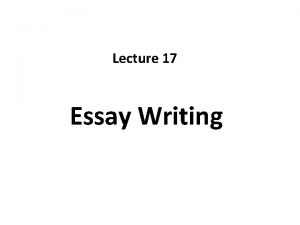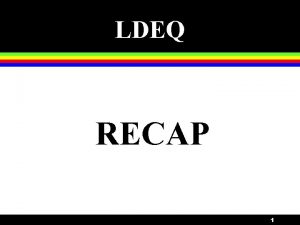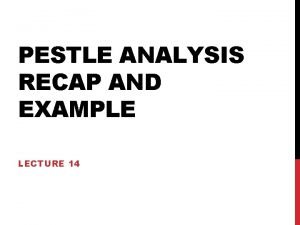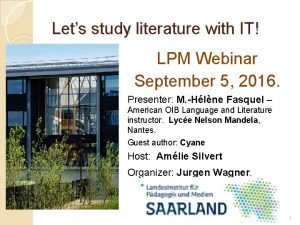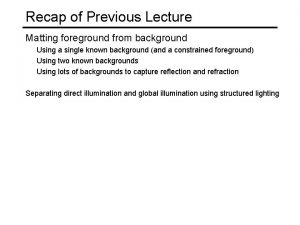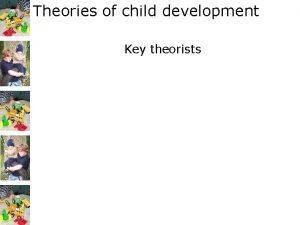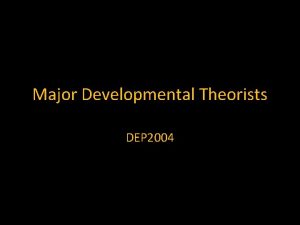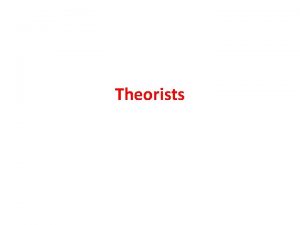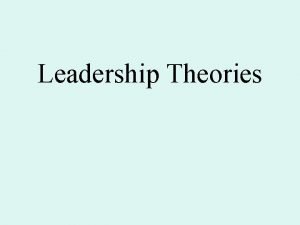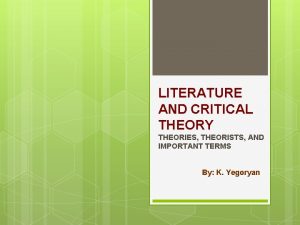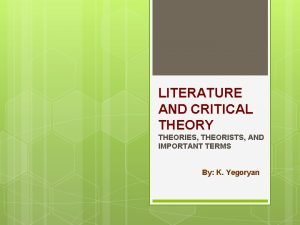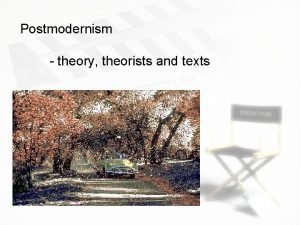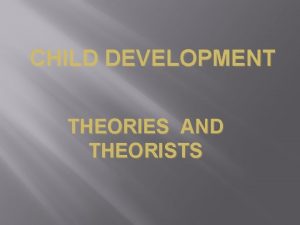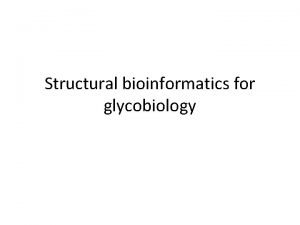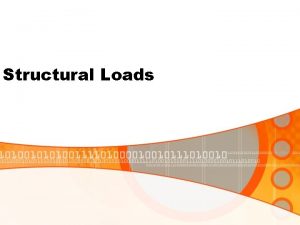RECAP Structural approach Top Key theories and theorists



























































- Slides: 59

RECAP Structural approach = Top ______ Key theories and theorists – Functionalism : Talcott Parsons Emile Durkheim _____ : Karl Marx Neo Marxism: The Frankfurt School (including theorists such as Althusser) Methodological approach = P_____ Keywords – Hypothetico deductive model, quantitative, objectivity, value STRUCTURATION freedom THEORY experiments, (GIDDENS) surveys. Sampling: Random/non random Key theories and theorists – Methodological Labelling: Howard Becker approach. I________/ and Lemert S______ phenomenological I______: Keywords : Mead, Weber, observation, ethnography, focus Blumer group, values Goffman (influenced by Sampling : S______, Symbolic Interactionism theoretical. Social Action Approach = _____ up

RECAP Structural approach = Top down Key theories and theorists – Functionalism : Talcott Parsons Emile Durkheim Marxism : Karl Marx Neo Marxism: The Frankfurt School (including theorists such as Althusser) Methodological approach = Positivism Keywords – Hypothetico deductive model, quantitative, objectivity, value STRUCTURATION freedom THEORY experiments, (GIDDENS) surveys. Sampling: Random/non random Key theories and theorists – Methodological Labelling: Howard Becker approach. Interpretive and Lemert /phenomenological Symbolic Interactionism: Keywords : Mead, Weber, observation, ethnography, focus Blumer group, values Goffman (influenced by Sampling : Snowball, Symbolic Interactionism theoretical. Social Action Approach = bottom up

Lesson 1

BIG Idea: How is society different to the one your grandparents grew up in? Are there things that have stayed the same?

The BIG Idea We are Learning to. . . • Discover the key characteristics of globalisation. • Explore the question of whether globalisation has changed the nature of ‘modern’ society. In today’s lesson. . . GOOD learning … GREAT learning … EVEN BETTER … Be able to give a basic description of both modernity and globalisation, identifying one or two characteristics for each. Be able to give a clear description of both modernity and globalisation, identifying two or more characteristics for each, and discuss an opinion on whether we are still living in modernity or not. Be able to give a clear description of both modernity and globalisation, identifying three or more characteristics for each, using examples from modern society and discuss an opinion on whether we are still living in modernity or not, clearly backing up your opinion with clear explanations.

Modernity: “Society that is still influenced by…” • 18 th & 19 th Century • Human experience • Enlightenment • Technology • Science • Advance • Progress • Rationality

How Modernity Changed Society Individualism Rationality Capitalism The Nation State

Late Modernity/Post modernity Modernity 1970 s- F + M failed to provide an adequate explanation for the existence of society Functionalism and Marxism 1970 s Feminism emerged – as traditional theories were unable to explain society given it’s recent changes. 1970 s – Social Action theories became popular but didn’t provide the overarching theoretical framework shown by F + M 1980 s Late Modernism and Postmodernism emerged for the same reasons as above.


Globalisation (1970 s-? ) – A Process of Connectivity

The Impact of Globalisation • Prepare a brief summary of your element of globalisation. – Technological Changes – Economic Changes – Political Changes – Cultural Changes • What has changed? What examples can you think of? • What are the benefits/drawbacks of your aspect of globalisation?

How Has Globalisation Changed Society? • Q 1 - What is globalisation? (3 marks) • Q 2 - Does globalisation mean we now live in a fundamentally different society, or are we still living in modernity? – 1 or 2 paragraphs. • Q 3 (extension) - Are modernist theories still relevant? – 1 paragraph. • Peer Assessment: Have they met the learning outcomes? Assess where they are and give a success and a target.

The BIG Idea We are Learning to. . . • Discover the key characteristics of globalisation. • Explore the question of whether globalisation has changed the nature of ‘modern’ society. In today’s lesson. . . GOOD learning … GREAT learning … EVEN BETTER … Be able to give a basic description of both modernity and globalisation, identifying one or two characteristics for each. Be able to give a clear description of both modernity and globalisation, identifying two or more characteristics for each, and discuss an opinion on whether we are still living in modernity or not. Be able to give a clear description of both modernity and globalisation, identifying three or more characteristics for each, using examples from modern society and discuss an opinion on whether we are still living in modernity or not, clearly backing up your opinion with clear explanations.

Lesson 2

Globalisation Technological Changes Economic Changes Political Changes Culture & Identity

The BIG Idea We are Learning to. . . • Explore the key features and concepts of postmodernism. • Evaluate the claim that we now live in a postmodern world. In today’s lesson. . . GOOD learning … GREAT learning … EVEN BETTER … Be able to explain what postmodernism is, using an example from contemporary society to illustrate the idea that modernism is dead. Be able to explain what postmodernism is, using more than one example from contemporary society to illustrate the idea that modernism is dead. Make reference to at least one postmodernist theorist. Be able to explain what postmodernism is, using more than one example from contemporary society to illustrate the idea that modernism is dead. Make reference to more than one postmodernist theorists and evaluate their ideas.

Late Modernity/Post modernity Modernity 1970 s- F + M failed to provide an adequate explanation for the existence of society Functionalism and Marxism 1970 s Feminism emerged – as traditional theories were unable to explain society given it’s recent changes. 1970 s – Social Action theories became popular but didn’t provide the overarching theoretical framework shown by F + M 1980 s Late Modernism and Postmodernism emerged for the same reasons as above.

From Modernity to Post-Modernity? Modern Age Post-modern Age • Production • Community life • Social class • Family (nuclear) • Tradition • A one-way media • Nationhood • Progress through scientific discovery Structure/Stability Confusion/Choice

From Modernity to Post-Modernity? Modern Age Post-modern Age • Production • Consumption • Community life • Individualism • Social class • Identity from other sources • Family (nuclear) • Families (many options) • Tradition • Breaking from the past • A one-way media • Duality of media (choice/interchange) • Nationhood • Progress through scientific discovery Structure/Stability • Global citizenship • Science is only one of a plurality of truths Confusion/Choice




Jacques Derrida • Post-modernists reject all ‘metanarratives’ and argue that trying to tell the ‘big story’ now is impossible. • Society is in a state of flux (constant change). • People are constructing themselves and designing their individual identities. • All meaning is now relative and socially constructed.

Metanarratives Examples of meta narratives – 1. 2. 3.


Jean Francois Lyotard (1984) • No absolute truth. All accounts of reality are equally valid. • All metanarratives are simplistic and reductionist. • Knowledge is no longer a tool of the authorities – individuals have choice and freedom. • Actions and ideas are now judged on how useful they are. . . rather than how true they are.

Jean Baudrillard • We are now just customers whose desires are created by the media. • We pursue the images attached to the products. • We pursue ‘simulacra’ - make believe goods which bear no relationship to the real world • We live in hyper-realities in which appearances are everything. • IMAGE IS EVERYTHING !

Baudrillard -Culture and Identity Baudrillard – Simulacra Key ideas. Society is no longer based on the production of material goods, but rather on buying and selling knowledge in the form of signs. Signs in the past had some bearing to reality, where as those today don’t have any connection. Signs that have no connection to reality are called Simulacra. This situation is called hyper-reality. Culture and identity in postmodern society differ from modern society, (largely because of the media (hyper-reality). The media transmits many different messages and people cease to believe any one version of reality, so culture becomes fragmented. People stop believing in metanarratives due to people hearing too many versions of the truth. Identity is destabilised, identity no longer from class etc, instead we construct / change our own identity through changing our consumption patterns. We can’t improve society due to hyper-reality.


Activity Dominic Strinati (1995) identifies five main features of current popular culture that reflect postmodern influences. Discuss in a small group suggestions for at least two or three further examples for each of Strinati’s categories. A breakdown of the distinction between culture and society. For example, media images increasingly dominate our sense of reality and how we define ourselves. An emphasis on style at the expense of substance and content. For example, the importance of packaging, designer labels and advertising, rather than quality of content. A breakdown of the distinction between high culture and popular culture. For example, prints of Monet paintings on umbrellas; opera and football; Campbell’s soup cans as art. Confusion over time and space. For example, ‘visits’ to soap operas by famous ‘real’ people; lifts and pipes on the outsides of buildings rather than the insides; sporting events seen all over the world at once. The decline of ‘meta-narratives’ such as religion, science and political theories. For example, phone-ins where everyone’s view is as good as the expert’s; mixtures of genres and styles in films, buildings etc.

Lyotard What are Grand Narratives? Under what circumstances have they come about? What is the link between sociological theory and contemporary society? Baudrillard What is knowledge and what is it used for? According to Baudrillard how do we demonstrate our lack of interest in social solidarity and politics? What role has media played in ‘the death of the social’? How does consumption help to demonstrate the idea of ‘sign objects’? What are simulacra and how to do they link with hyperreality?

Evaluations of Postmodernism? Strengths: • It addresses the growing impact of mass media on society. • It challenged the absolutist positions of the old metanarratives. • It sees individuals as having choices to create ‘pick and mix’ identities through consumerism. Weaknesses: • Is postmodernism not a metanarrative? • Postmodernism emphasises the cultural at the expense of the social and economic. • It fails to recognise the constraints on the individuals of the huge social inequalities that still exist based on economics, gender and ethnicity.

Postmodernism • Using the images and your notes from today, try to write a paragraph in response to the following question: – Are the traditions of the Enlightenment still relevant? Are modernist theories still relevant? • Consider whether we can still hope to improve society through science and objective knowledge, or is society too chaotic?

The BIG Idea We are Learning to. . . • Explore the key features and concepts of postmodernism. • Evaluate the claim that we now live in a postmodern world. In today’s lesson. . . GOOD learning … GREAT learning … EVEN BETTER … Be able to explain what postmodernism is, using an example from contemporary society to illustrate the idea that modernism is dead. Be able to explain what postmodernism is, using more than one example from contemporary society to illustrate the idea that modernism is dead. Make reference to at least one postmodernist theorists. Be able to explain what postmodernism is, using more than one example from contemporary society to illustrate the idea that modernism is dead. Make reference to more than one postmodernist theorists and evaluate their ideas.


Lesson 3

Modern Age Postmodern Age • Production • Community life • Social class • Family (nuclear) • Tradition • A one-way media • Nationhood • Progress through scientific discovery Structure/Stability Confusion/Choice

Modern Age Postmodern Age • Production • Consumption • Community life • Individualism • Social class • Identity from other sources • Family (nuclear) • Families (many options) • Tradition • Breaking from the past • A one-way media • Plurality of media • Nationhood • Global citizenship • Progress through scientific discovery • Science is only one of a plurality of truths Structure/Stability Confusion/Choice

The BIG Idea We are Learning to. . . Theories of Late Modernity • Explore the idea that we are currently in an era of late modernity. • Evaluate the claim that we are currently in an era of late modernity. In today’s lesson. . . GOOD learning … GREAT learning … EVEN BETTER … Be able to explain theory of late modernity, using an example from contemporary society to illustrate the idea that we are in the last of the modern era. Be able to explain theory of late modernity, using more than one example from contemporary society to illustrate the idea that we are in the last of the modern era. Make reference to at least one sociological theorist. Be able to explain and evaluate theory of late modernity, using more than one example from contemporary society to illustrate the idea that we are in the last of the modern era. Make reference to at least two sociological theorists.

Late Modernity/Post modernity Modernity 1970 s- F + M failed to provide an adequate explanation for the existence of society Functionalism and Marxism 1970 s Feminism emerged – as traditional theories were unable to explain society given it’s recent changes. 1970 s – Social Action theories became popular but didn’t provide the overarching theoretical framework shown by F + M 1980 s Late Modernism and Postmodernism emerged for the same reasons as above.

Theories of late modernity • Theories of late modernity argue that today’s rapid changes are not the dawn of a new postmodern era, but a continuation of modern society. • Key features of modernity have now become intensified; e. g. change has always been typical of modern society, but now it has gone into overdrive. • Unlike Postmodernism, theories of late modernity still subscribe to the Enlightenment project.

Giddens: Late Modernity

Individualism & Risk

Beck: The Risk Society

Beck Activity We can analyse different aspects of our lives and careers in terms of the ’risks’ described by Ulrich Beck. • Can you think of examples of how you have changed your own behaviour as a result of risks that you perceive? • Assess the potential risks that might result from a decision one way or the other: The decision whether or not to marry at age 22. The decision whether to take a year out in a job rather than go to university directly from school. The decision whether or not to resign from a job in order to spend a year travelling round the world. The decision whether or not to move on retirement to a bungalow by the sea. • Explain why a person living in 1900 might be less likely to have faced such risks.

Criticisms – 1. 2. Beck’s Risk Theory – A Late Modern Approach Risk Society What is the difference between risks and hazards? How have risks changed in the late modern period? What is reflexive modernisation? 3. What is individualization and why have people moved towards it?

Bauman: Liquid Modernity

The BIG Idea We are Learning to. . . Theories of Late Modernity • Explore the idea that we are currently in an era of late modernity. • Evaluate the claim that we are currently in an era of late modernity. In today’s lesson. . . GOOD learning … GREAT learning … EVEN BETTER … Be able to explain theory of late modernity, using an example from contemporary society to illustrate the idea that we are in the last of the modern era. Be able to explain theory of late modernity, using more than one example from contemporary society to illustrate the idea that we are in the last of the modern era. Make reference to at least one sociological theorist. Be able to explain and evaluate theory of late modernity, using more than one example from contemporary society to illustrate the idea that we are in the last of the modern era. Make reference to at least two sociological theorists.

We are now living in a new era which is an unstable, fragmented, media-saturated global village, where image and reality are indistinguishable. We define ourselves by what we consume. Late modernity and postmodernity Which do you agree with the most? The rapid changes that we are witnessing are not the dawn of a new era, on the contrary these changes are actually a continuation of modernity what has come before. Key features of what came before are now more intensified with the pace of change going into overdrive.

Lesson 4

Big Idea: How could postmodernism be seen to benefit capitalism?

The BIG Idea We are Learning to. . . • Explore Marxist perspectives on postmodernism. • Evaluate the idea that postmodernism is linked to capitalism. In today’s lesson. . . GOOD learning … GREAT learning … EVEN BETTER … Be able to explain how some Marxists respond to the idea that we are living in a postmodern world, including more than one example, key words and reference to at least one Marxist sociologist. Be able to explain and evaluate how some Marxists respond to the idea that we are living in a postmodern world, including more than one example, key words and reference to at least one Marxist sociologist.

Marxism and Postmodernity • Marxist David Harvey (1989) believes that we do live in a postmodern society, dominated by media, diversity and instability. • As a Marxist, he sees PM not as a break from the past, but as driven by the latest stage of capitalism.

Flexible Accumulation • Harvey described this new capitalism as ‘flexible accumulation, ’ (or Post. Fordism), the idea that companies needed to use ICT and other systems to respond to cultural diversity and accumulate more profit.

Flexible Accumulation • Companies must produce customised products for niche markets, and adapt quickly to respond to changes in fashion/ideas. • Harvey argues that PM allows companies to sell ‘cultural products, ’ such as fashion, music, sports and computer games all over the world.


Political Changes • Harvey also argues that flexible accumulation has: – Weakened the working class and socialist movements. – Instead, a variety of opposition movements have emerged (e. g. women’s liberation groups, anti-racism groups, etc). • Harvey hopes for a ‘rainbow coalition. ’

Evaluation Questions • (-) If Marxists admit that PM has happened, are they accepting that Marx’s working class revolution has failed? • (+) The anti-capitalism movement – Harvey’s rainbow alliance?

The BIG Idea We are Learning to. . . • Explore Marxist perspectives on postmodernism. • Evaluate the idea that postmodernism is linked to capitalism. In today’s lesson. . . GOOD learning … GREAT learning … EVEN BETTER … Be able to explain how some Marxists respond to the idea that we are living in a postmodern world, including more than one example, key words and reference to at least one Marxist sociologist. Be able to explain and evaluate how some Marxists respond to the idea that we are living in a postmodern world, including more than one example, key words and reference to at least one Marxist sociologist.
 Education theorists and their theories
Education theorists and their theories How to foil in biology
How to foil in biology Romeo and juliet act 1 summary
Romeo and juliet act 1 summary Top down and bottom up approach
Top down and bottom up approach Bottom up vs top down psychology
Bottom up vs top down psychology Top-down approach in reading examples
Top-down approach in reading examples Allport cardinal traits
Allport cardinal traits Behaviourism theorists
Behaviourism theorists The hidden tiger illusion
The hidden tiger illusion Define cultural deviance theory
Define cultural deviance theory Life course theorists suggest socialization
Life course theorists suggest socialization Individual delinquency
Individual delinquency Trait theorists
Trait theorists Theories of social action
Theories of social action Language change theories
Language change theories Latent trait theory criminology
Latent trait theory criminology Classroom management theories
Classroom management theories Madeleine leininger
Madeleine leininger Conflict theory in education
Conflict theory in education Conflict theorists
Conflict theorists New historicism
New historicism The game theorists
The game theorists Physical development theorists arnold gesell
Physical development theorists arnold gesell Contemporary conflict theorists
Contemporary conflict theorists Via gaudenzio ferrari 4 torino
Via gaudenzio ferrari 4 torino Formalist essay
Formalist essay Structural approach cos'è
Structural approach cos'è The structural approach
The structural approach Definition of structural functionalism
Definition of structural functionalism Structural functionalism examples in real life
Structural functionalism examples in real life Chapter 4 child development principles and theories
Chapter 4 child development principles and theories Shawshank redemption film study
Shawshank redemption film study Ch 8 summary great gatsby
Ch 8 summary great gatsby Price matching
Price matching What is the purpose of an iteration recap
What is the purpose of an iteration recap Recap intensity clipping
Recap intensity clipping 60 minutes recap
60 minutes recap Recap database
Recap database Differentiation recap
Differentiation recap Recap introduction
Recap introduction Recap introduction
Recap introduction Recap from last week
Recap from last week The crucible act 4 discussion questions
The crucible act 4 discussion questions Pontius pilate allusion
Pontius pilate allusion Logbook recap example
Logbook recap example Ytm recap
Ytm recap Black box recap
Black box recap Fractions recap
Fractions recap Recap
Recap Horizontal axis is called
Horizontal axis is called Recap indexing scans
Recap indexing scans Lets have a recap
Lets have a recap Recap poster
Recap poster What is a essay
What is a essay Ldeq recap
Ldeq recap Recap accounting
Recap accounting What is economic environment example
What is economic environment example Let's recap
Let's recap Perfect lesson 7
Perfect lesson 7 Recap background
Recap background




